NUMA Electronics 319-BT82600 Bluetooth Module User Manual
NUMA Electronics Inc. Bluetooth Module
User manual
1
Bluetooth Module User Guide
NUMA 319-BT82600 Bluetooth module
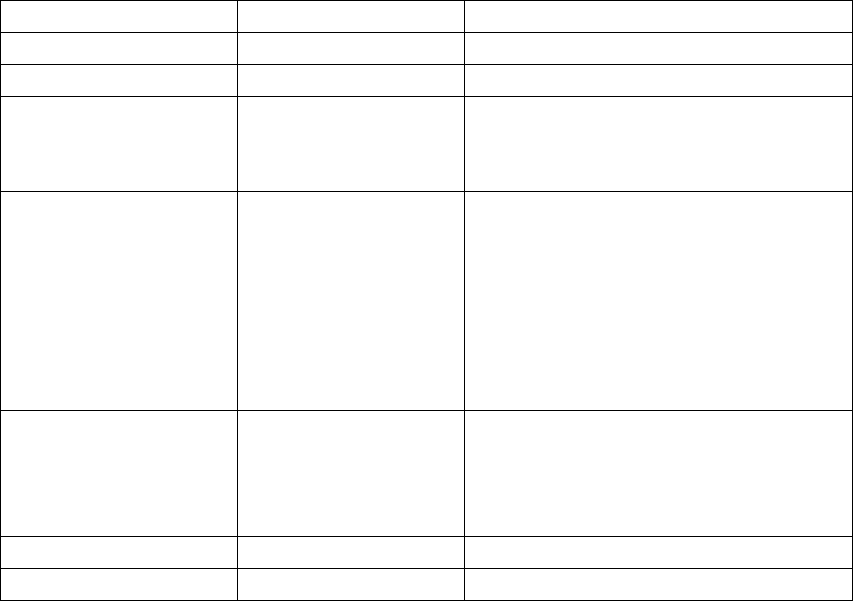
2
Release Record
Version Number Release Date Comments
Revision 1.0 2014-11-5 First Release
Revision 1.1 2015-09-09
Revision 1.2 2016-03-24 1, Modified BT Status for 33 pin,
2, Modify the application circuit
diagram.
Revision 1.3 2016-04-16 1, Modify the Pin 9 ,10 , 14, 16 ,
17,28,31 function definition.
2, Modify the application circuit
diagram.
3, This version of the specification
is applicable to V1.2 version of the
PCB.
Revision 1.4 2016-08-06 1, PIN27 Alternative Function :BT
Power Mode
2, Modify the application circuit
diagram.
FEDERAL COMMUNICATIONS COMMISSION INTERFERENCE STATEMENT
This equipment has been tested and found to comply with the limits for a Class B digital device,
pursuant to part 15 of the FCC Rules. These limits are designed to provide reasonable
protection against harmful interference in a residential installation. This equipment generates,
uses and can radiate radio frequency energy and, if not installed and used in accordance with
the instructions, may cause harmful interference to radio communications. However, there is
no guarantee that interference will not occur in a particular installation. If this equipment does
cause harmful interference to radio or television reception, which can be determined by
turning the equipment off and on, the user is encouraged to try to correct the interference by
one or more of the following measures:
-Reorient or relocate the receiving antenna.
-Increase the separation between the equipment and receiver.
-Connect the equipment into an outlet on a circuit different from that to which the receiver is
connected.
-Consult the dealer or an experienced radio/ TV technician for help.
CAUTION:
Any changes or modifications not expressly approved by the grantee of this device could void
the user's authority to operate the equipment.
This device complies with Part 15 of the FCC Rules. Operation is subject to the following two
conditions:
(1) this device may not cause harmful interference, and
(2) this device must accept any interference received, including interference that may cause
undesired operation.
RF exposure warning
This equipment must be installed and operated in accordance with provided instructions and
the antenna(s) used for this transmitter must be installed to provide a separation distance of at
least 20 cm from all persons and must not be co-located or operating in conjunction with any
other antenna or transmitter. End-users and installers must be provide with antenna
installation instructions and transmitter operating conditions for satisfying RF exposure
compliance.
End Product Labeling
This transmitter module is authorized only for use in device where the antenna may be installed
such that 20cm may be maintained between the antenna and users. The final end product must
be labeled in a visible area with the following: "Contains FCC ID: YKH319-BT82600 “
Information for the OEMs and Integrators
The following statement must be included with all versions of this document supplied to an
OEM or integrator, but should not be distributed to the end user.
1) This device is intended for OEM integrators only.
2) Please see the full Grant of Equipment document for other restrictions.
4
1.2 Feature
◆ Postage stamp sized form factor.
◆ Low power.
◆ Class 1.5 support(high output power)
◆ The default UART Baud rate is 115.2Kbps and can support from 1200bps up to 921Kbps,.
◆ UART, I2C,PCM / I2S data connection interfaces.
◆ Support the OTA upgrade.
◆ Bluetooth stack profiles support: SPP, HID, MAP, and all BLE protocols.
1.3 Application
◆ Smart Watch and Bluetooth Bracelet
◆ Health & Medical devices
◆ Wireless POS
◆ Measurement and monitoring systems
◆ Industrial sensors and controls
◆ Asset Tracking
Note: For YKH319-BT82600, it supports Bluetooth V3.0, V2.1+EDR mode only without BLE function.
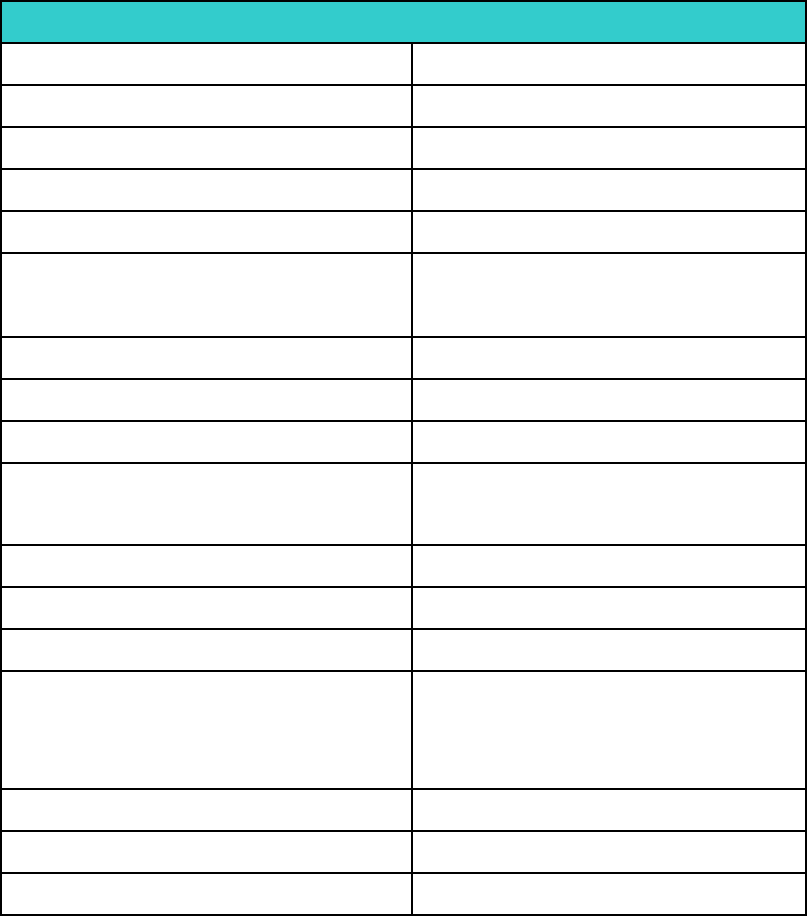
5
2. GENERAL SPECIFICATION
General Specification
Chipset Realtek RTL8761
Product FSC-BT826
Dimension 13mm x 26.9mm x 2mm
Bluetooth Specification Bluetooth V4.0 (Dual Mode)
Power Supply 3.3 Volt DC
Sensitivity -82dBm@0.1%BER
Frequency Band 2.402GHz -2.480GHz ISM band
Modulation FHSS,GFSK,DPSK,DQPSK
Baseband Crystal OSC 40MHz
Hopping & channels
1600hops/sec, 1MHz channel space,79
Channels(BT 4.0 to 2MHz channel space)
RF Input Impedance 50 ohms
Antenna Integrated chip antenna
Interface Data: UART, I2C, PCM / I2S
Profile
SPP, GATT(BLE Standard)
MFI,Airsync,ANCS, iBeacon,
MAP(optional),OTA(optional)
Temperature -20ºC to +70 ºC
Humidity 10%~95% Non-Condensing
Environmental RoHS Compliant
Table 1
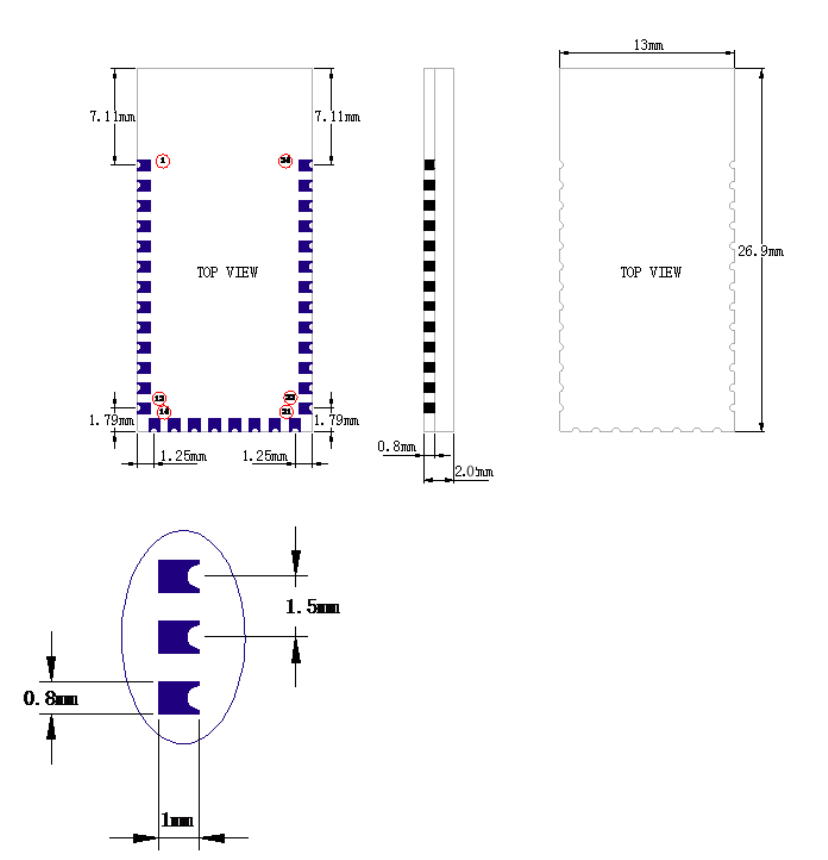
6
3. PHYSICAL CHARACTERISTIC
FSC-BT826 dimension is 26.9mm(L)x13mm(W)x2mm(H).
Figure 2:Package Dimensions(TOP VIEW)
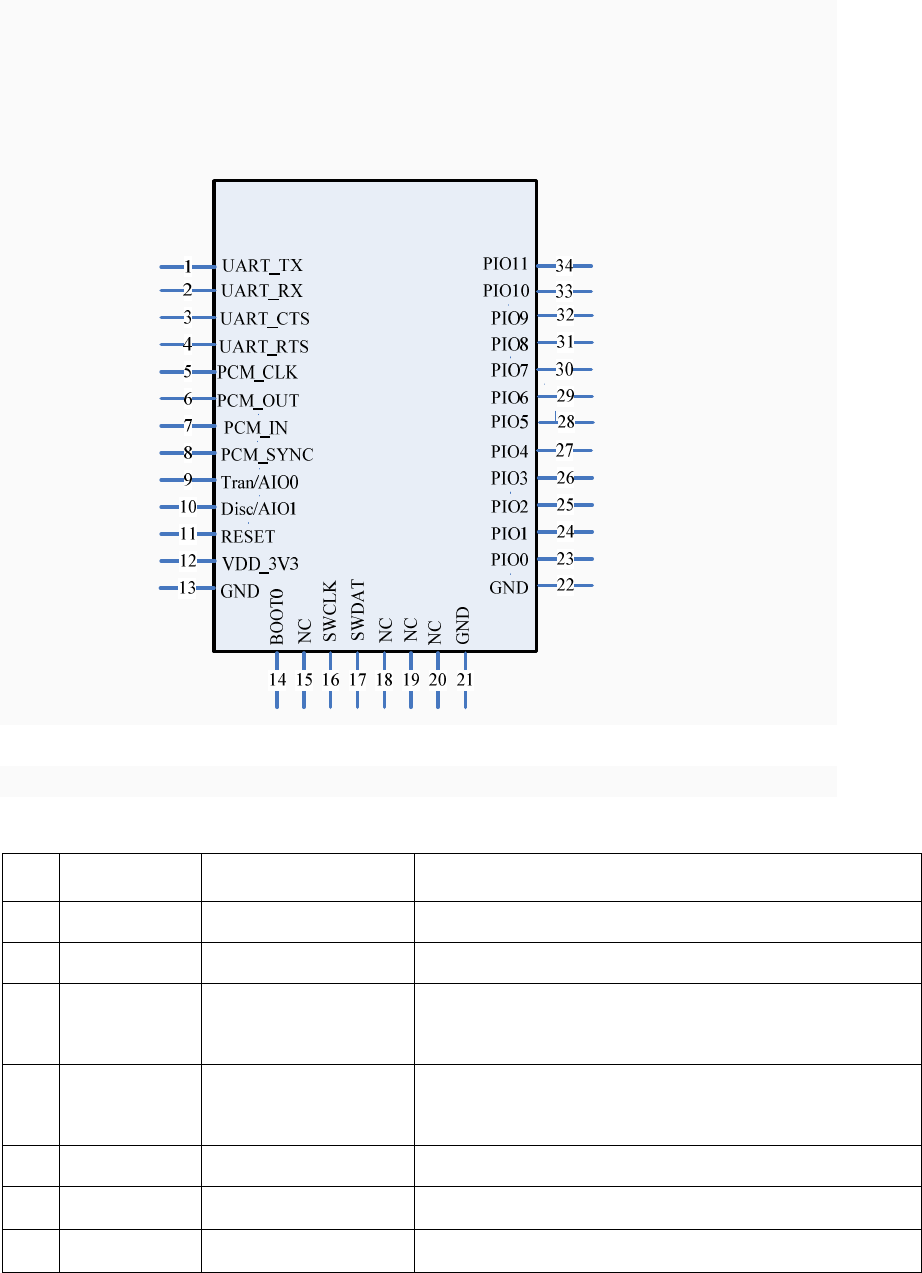
7
4. PIN DEFINITION DESCRIPTIONS
* Special tips: PIO0,PIO1,PIO2,PIO3 I/O port for reuse.
When using the OTA function upgrade (air), please send the I/O mouth dangling;
If the I/O port to connect the MCU,
then set the MCU I/O ports for the input port or high impedance state.
Figure 3:PIN description
Pin Pin Name Pad Type Description
1 UART_TX CMOS output UART data output
2 UART_RX CMOS input UART data input
3
UART_CTS CMOS input
UART clear to send active low
Alternative Function: Programmable input/output line
4 UART_RTS CMOS output
UART request to send active low
Alternative Function: Programmable input/output line
5 PCM_CLK Bi-directional Synchronous data clock
6 PCM_OUT CMOS Output Synchronous data output
7 PCM_IN CMOS Input Synchronous data input
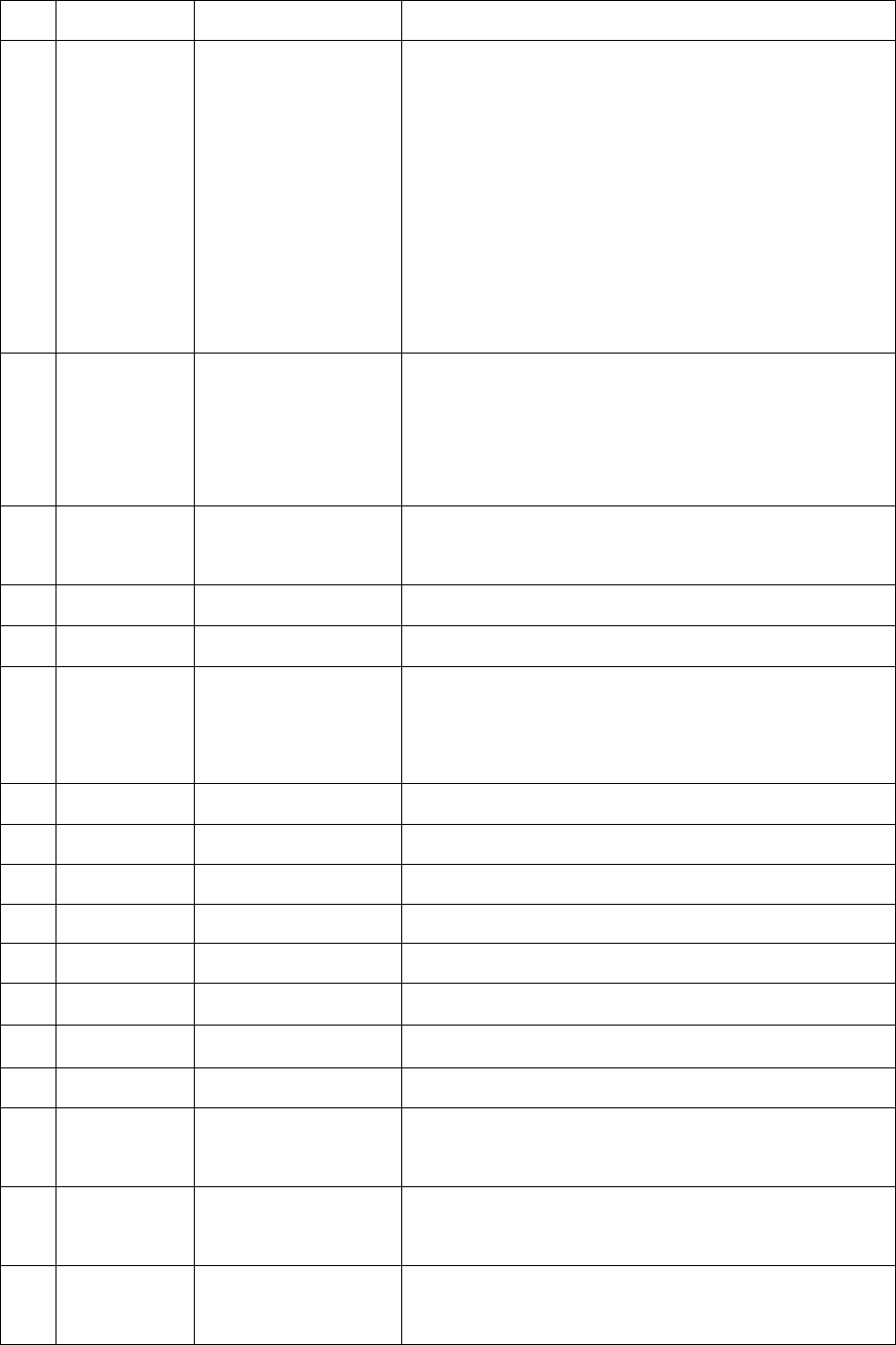
8
8 PCM_SYNC Bi-directional Synchronous data Sync
9 Tran/AIO0 I/O
Host MCU change UART transmission mode. (Default)
If current UART transmission mode is command mode,
one low pulse with 80ms duration low signal will change
UART transmission mode to throughput mode, and
another low pulse could change UART transmission
mode back to command mode. Otherwise it will be set as
high always.
Alternative Function: Analogue programmable I/O line.
10 Disc/AIO1 I/O
Host MCU disconnect bluetooth. (Default)
One low pulse with 80ms duration low signal to trigger bl
uetooth disconnection.Otherwise it will be set as high alw
ays.
Alternative Function: Analogue programmable I/O line.
11 RESET CMOS input
Reset if low. Input debounced so must be low for >5ms to
cause a reset.
12 VDD_3V3 VDD Power supply voltage 3.3V
13 GND VSS Power Ground
14 BOOT0 Bi-directional
The default is low. (internal 10K resistance drop)
When writing to MCU when using the serial port, this pin
is connected with the high level.
15 NC NC NC
16 SWCLK Bi-directional Debugging through the clk line(Default)
17 SWDIO Bi-directional Debugging through the data line(Default)
18 NC NC NC
19 NC NC NC
20 NC NC NC
21 GND VSS Power Ground
22 GND VSS Power Ground
23
PIO0 I/O
Programmable input/output line
* The I/O port for reuse.
24
PIO1 I/O
Programmable input/output line
* The I/O port for reuse.
25
PIO2 I/O
Programmable input/output line
* The I/O port for reuse.
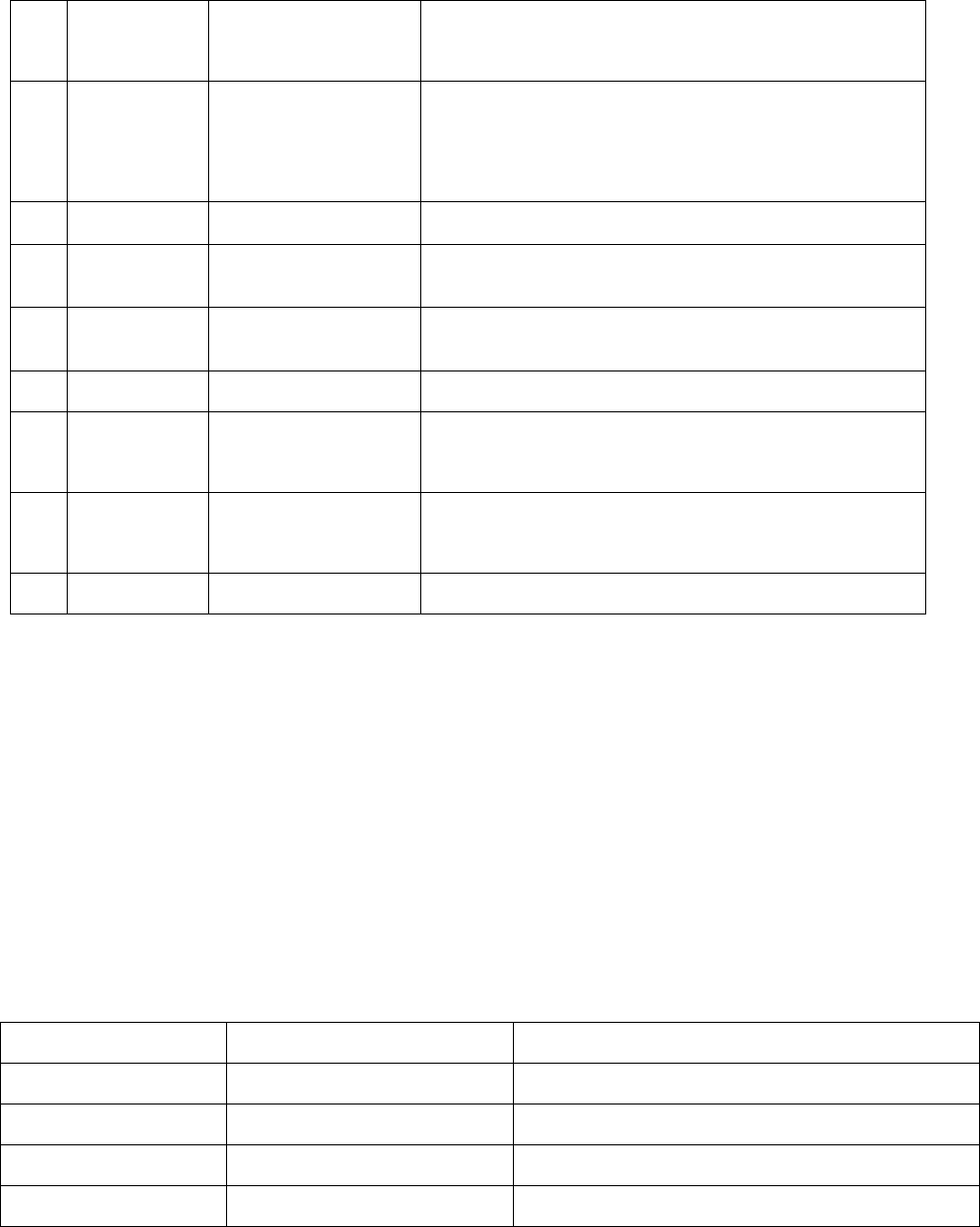
9
26 PIO3 I/O
Programmable input/output line
* The I/O port for reuse.
27 PIO4 I/O
Programmable input/output line
Alternative Function: BT Power Mode, low level in run
mode, it will be set to high level when fall asleep.
28 PIO5 I/O With the use of the Pin 9.
29 PIO6 I/O Programmable input/output line
Alternative Function: I2C CLK line (Default)
30 PIO7 I/O Programmable input/output line
Alternative Function: I2C DATA line (Default)
31 PIO8 I/O With the use of the Pin 10.
32
PIO9 I/O
Programmable input/output line
Alternative Function: LED(Default)
33
PIO10 I/O
Programmable input/output line
Alternative Function: BT Status(Default)
34 PIO11 I/O Programmable input/output line
Table 2
5. Interface Characteristics
5.1 UART Interface
Four signals are used to implement the UART function. When FSC-BT826 is connected to
another digital device, UART_RX and UART_TX transfer data between the two devices. The
remaining two signals, UART_CTS and UART_RTS, can be used to implement RS232
hardware flow control where both are active low indicators.
The interface consists of four-line connection as described in below:
Signal name Driving source Description
UART-TX FSC-BT826 module Data from FSC-BT826 module
UART-RX Host Data from Host
UART-RTS FSC-BT826 module Request to send output of FSC-BT826 module
UART-CTS Host Clear to send input of FSC-BT826 module
Table 3

10
Default Data Format
Property Possible Values
BCSP-Specific Hardware Enable
Baud Rate 115. 2 Kbps
Flow Control None
Data bit length 8bit
Parity None
Number of Stop Bits 1
Table 4
5.2 I2C Interface
◆ Up to two I2C bus interfaces can support both master and slave mode with a frequency up
to 400KHZ.
◆ Provide arbitration function, optional PEC(packet error checking) generation and checking.
◆ Supports 7 –bit and 10 –bit addressing mode and general call addressing mode.
The I2C interface is an internal circuit allowing communication with an external I2C interface
which is an industry standard two line serial interface used for connection to external hardware.
These two serial lines are known as a serial data line (SDA) and a serial clock line (SCL). The
I2C module provides two data transfer rates: 100 kHz of standard mode or 400kHz of the fast
mode. The I2C module also has an arbitration detect function to prevent the situation where
more than one master attempts to transmit data to the I2C bus at the same time. A CRC-8
calculator is also provided in I2C interface to perform packet error checking for I2C data.
5.3 Analog to digital converter (ADC)
◆ 12-bit SAR ADC engine with up to 1 MSPS conversion rate
◆ Conversion range: VSSA to VDDA (2.6 to 3.6 V)
◆ Temperature sensor
One 12-bit 1 μs multi-channel ADC is integrated in the device.
The conversion range is between 2.6 V < VDDA < 3.6 V. An analog watchdog block can be
used to detect the channels, which are required to remain within a specific threshold window.
A configurable channel management block of analog inputs also can be used to perform
conversions in single, continuous, scan or discontinuous mode to support more advanced
usages. The ADC can be triggered from the events generated by the general-purpose timers
(TMx) and the advanced-control timers (TM1) with internal connection.
The temperature sensor can be used to generate a voltage that varies linearly with
temperature. Each device is factory-calibrated to improve the accuracy and the calibration
data are stored in the system memory area.
5.4 PCM Interface Characteristics
The FSC-BT826 supports a PCM digital audio interface that is used for transmitting digital
audio/voice data to/from the Audio Codec. Features are supported as below
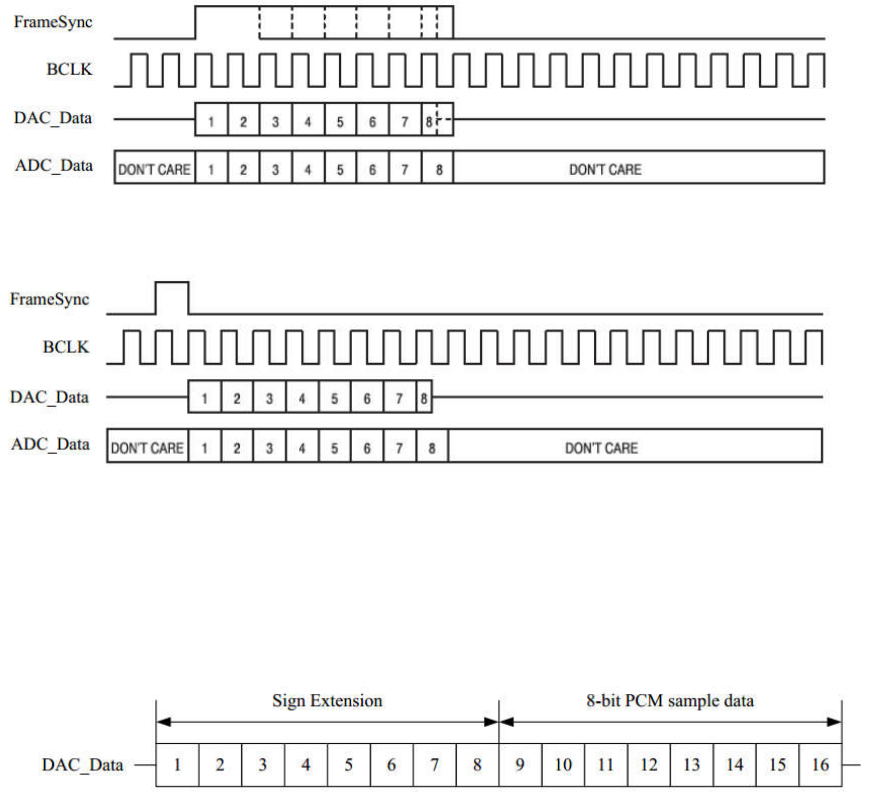
11
◆ Supports Master and Slave mode
◆ Programmable long/short Frame Sync
◆ Supports 8-bit A-law/µ-law, and 13/16-bit linear PCM formats
◆ Supports sign-extension and zero-padding for 8-bit and 13-bit samples
◆ Supports padding of Audio Gain to 13-bit samples
◆ PCM Master Clock Output: 64, 128, 256, or 512kHz
◆ Supports SCO/ESCO link
5.4.1 PCM Format
FrameSync is the synchronizing function used to control the transfer of DAC_Data and
ADC_Data. A Long FrameSync indicates the start of ADC_Data at the rising edge of
FrameSync (Figure 3), and a Short FrameSync indicates the start of ADC_Data at the falling
edge of FrameSync (Figure 4).
Figure 4:Long FrameSync
Figure 5:Short FrameSync
5.4.2 Sign Extension and Zero Padding for 8-Bit and 13-Bit Samples
For 16-bit linear PCM output, 3 or 8 unused bits may be sign extended/zero padded.
Figure 6:16-Bit Output Data with 8-Bit PCM Sample Data and Sign Extension
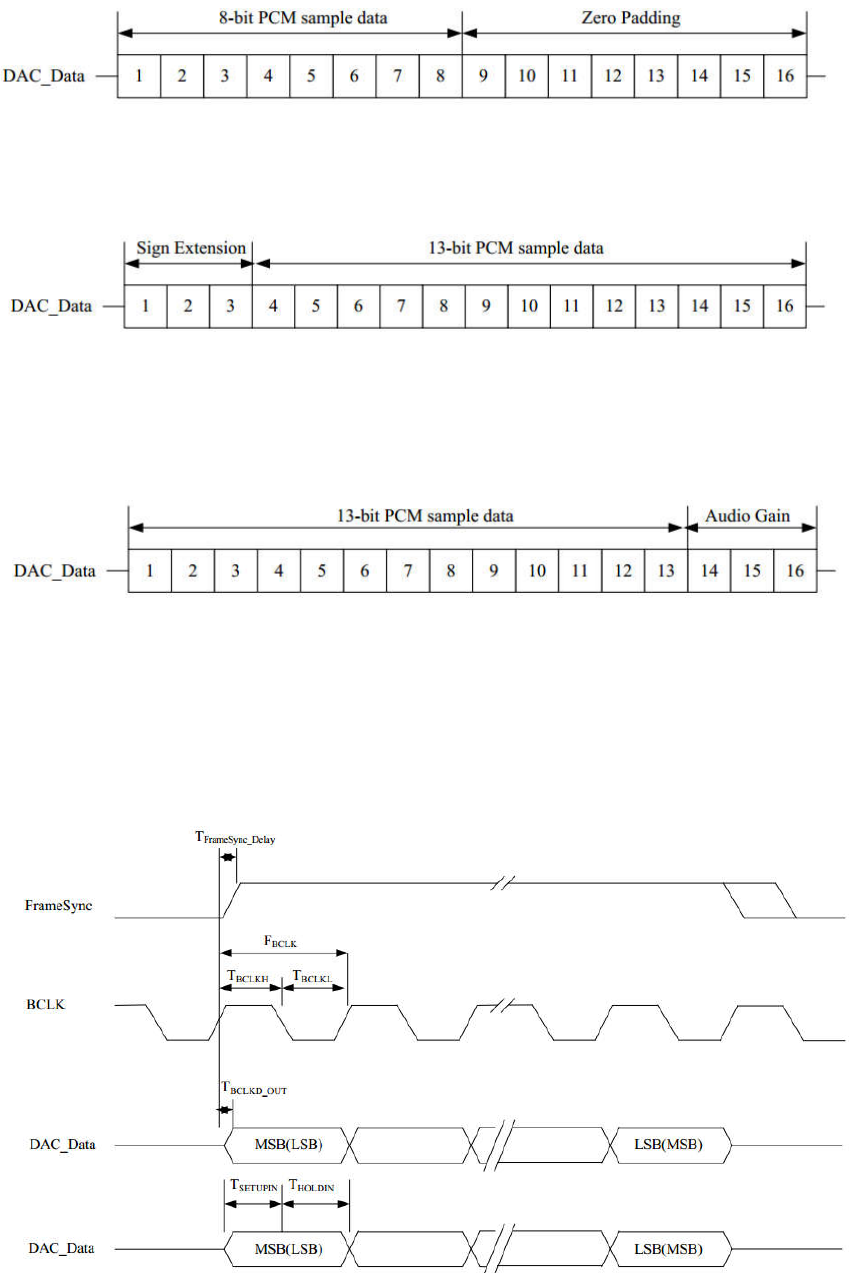
12
Figure 7:16-Bit Output Data with 8-Bit PCM Sample Data and Zero Padding
Figure 8:16-Bit Output Data with 13-Bit PCM Sample Data and Sign Extension
For 16-bit linear PCM output, 3-bit programmable audio gain value can be padded to
13-bit sample data.
Figure 9:16-Bit Output Data with 13-Bit PCM Sample Data and Audio Gain
5.4.3 PCM Interface Timing
Figure 10:PCM Interface (Long FrameSync)
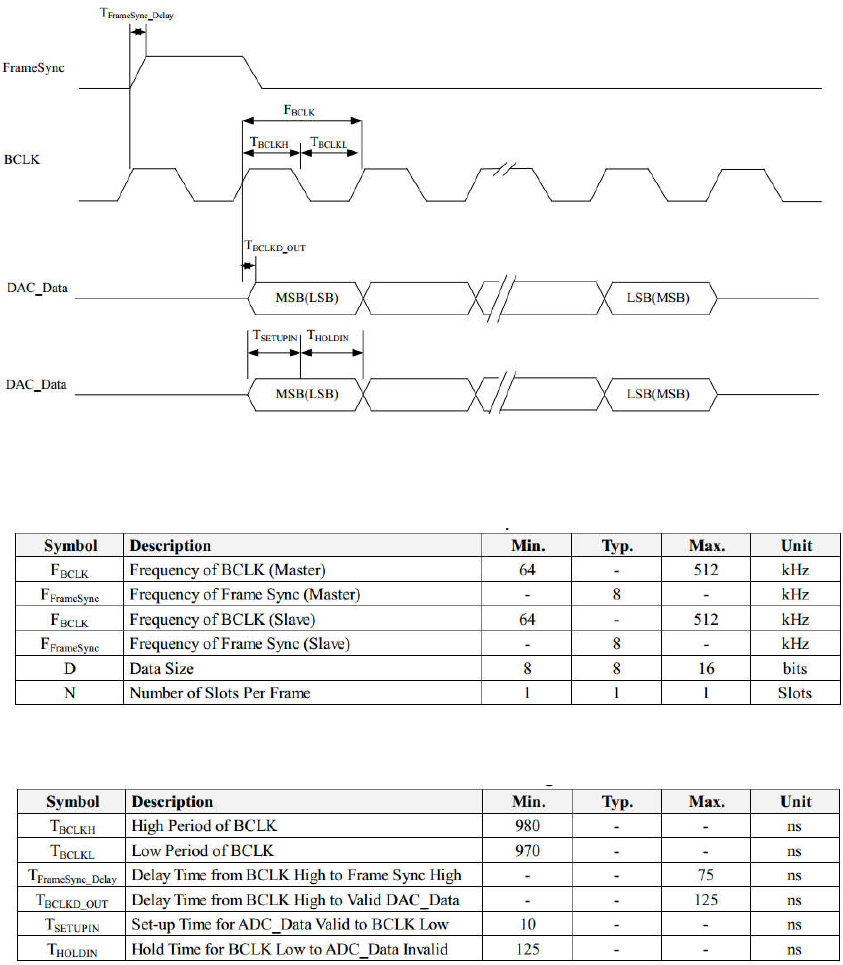
13
Figure 11:PCM Interface (Short FrameSync)
Table 5: PCM Interface Clock Specifications
Table 6: PCM Interface Timing
5.4.4 PCM Interface Signal Levels
The PCM signal level ranges from 1.8V to 3.3V.
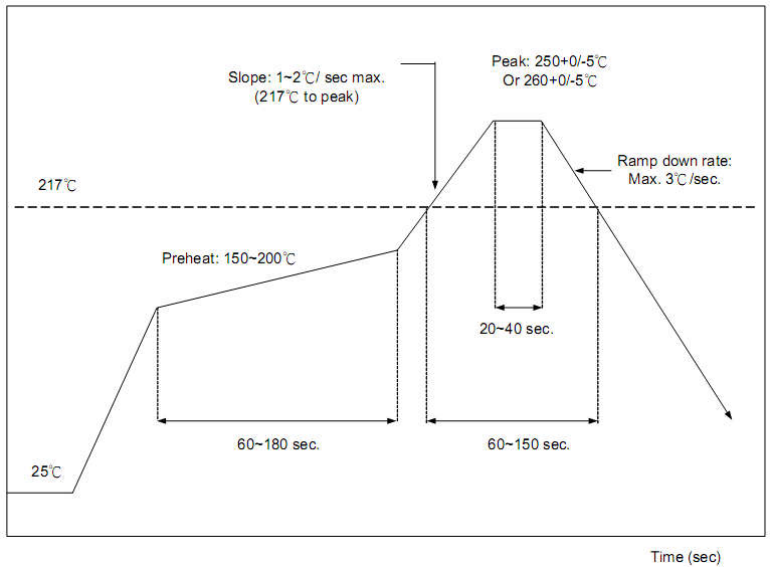
14
6. RECOMMENDED TEMPERATURE REFLOW PROFILE
The re-flow profiles are illustrated in Figure 11 and Figure 12 below.
Follow: IPC/JEDEC J-STD-020 C
Condition:
Average ramp-up rate(217 to peak):1~2 /sec max.℃ ℃
Preheat:150~200C,60~180 seconds
Temperature maintained above 217 :60~150 seconds℃
Time within 5 of actual peak temperature:20~40 sec.℃
Peak temperature:250+0/-5 or 260+0/℃-5℃
Ramp-down rate:3 /sec.max.℃
Time 25 to peak temperature:8℃ minutes max
Cycloe interval:5 minus
Figure 12: Typical Lead-free Re-flow Solder Profile
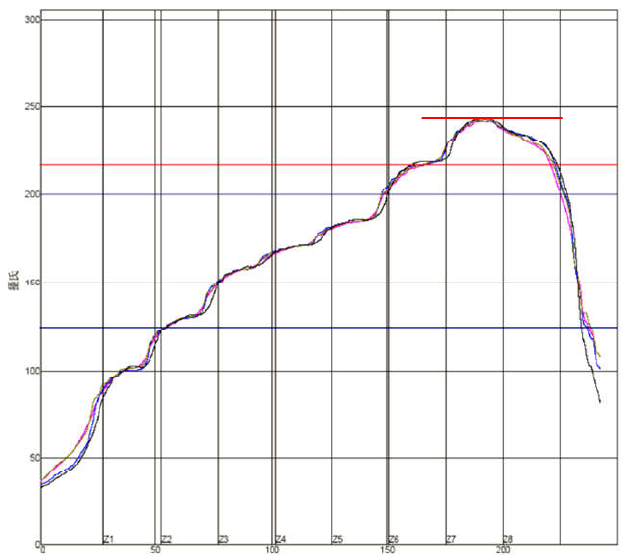
15
2170C
2420C
Figure 13 : Typical Lead-free Re-flow
The soldering profile depends on various parameters according to the use of different solder and
material. The data here is given only for guidance on solder re-flow.
FSC-BT826 will withstand up to two re-flows to a maximum temperature of 245°C.
7. Reliability and Environmental Specification
7.1 Temperature test
Put the module in demo board which uses exit power supply, power on the module and connect to
mobile. Then put the demo in the ‐20℃ space for 1 hour and then move to +70℃ space within
1minute, after 1 hour move back to ‐20℃ space within1 minute. This is 1 cycle. The cycles are
32 times and the units have to pass the testing.
7.2 Vibration Test
The module is being tested without package. The displacement requests 1.5mm and sample is
vibrated in three directions(X,Y,Z).Vibration frequency set as 0.5G , a sweep rate of 0.1 octave/min
from 5Hz to 100Hz last for 90 minutes each direction. Vibration frequency set as 1.5G, a sweep rate of
0.25 octave/min from 100Hz to 500Hz last for 20 minutes each direction.
7.3 Desquamation test
Use clamp to fix the module, measure the pull of the component in the module, make sure the
module`s soldering is good.
16
7.4 Drop test
Free fall the module (condition built in a wrapper which can defend ESD) from 150cm height to
cement ground, each side twice, total twelve times. The appearance will not be damaged and all
functions OK.
7.5 Packaging information
After unpacking, the module should be stored in environment as follows:
Temperature: 25 ± 2℃ ℃
Humidity: <60%
No acidity, sulfur or chlorine environment
The module must be used in four days after unpacking.
8. Layout and Soldering Considerations
8.1 Soldering Recommendations
FSC-BT826 is compatible with industrial standard reflow profile for Pb-free solders. The reflow
profile used is dependent on the thermal mass of the entire populated PCB, heat transfer efficiency of
the oven and particular type of solder paste used. Consult the datasheet of particular solder paste for
profile configurations.
Feasycom will give following recommendations for soldering the module to ensure reliable solder
joint and operation of the module after soldering. Since the profile used is process and layout
dependent, the optimum profile should be studied case by case. Thus following recommendation
should be taken as a starting point guide.
8.2 Layout Guidelines
It is strongly recommended to use good layout practices to ensure proper operation of the module.
Placing copper or any metal near antenna deteriorates its operation by having effect on the matching
properties. Metal shield around the antenna will prevent the radiation and thus metal case should not be
used with the module. Use grounding vias separated max 3 mm apart at the edge of grounding areas to
prevent RF penetrating inside the PCB and causing an unintentional resonator. Use GND vias all
around the PCB edges.
The mother board should have no bare conductors or vias in this restricted area, because it is not
covered by stop mask print. Also no copper (planes, traces or vias) are allowed in this area, because of
mismatching the on-board antenna.
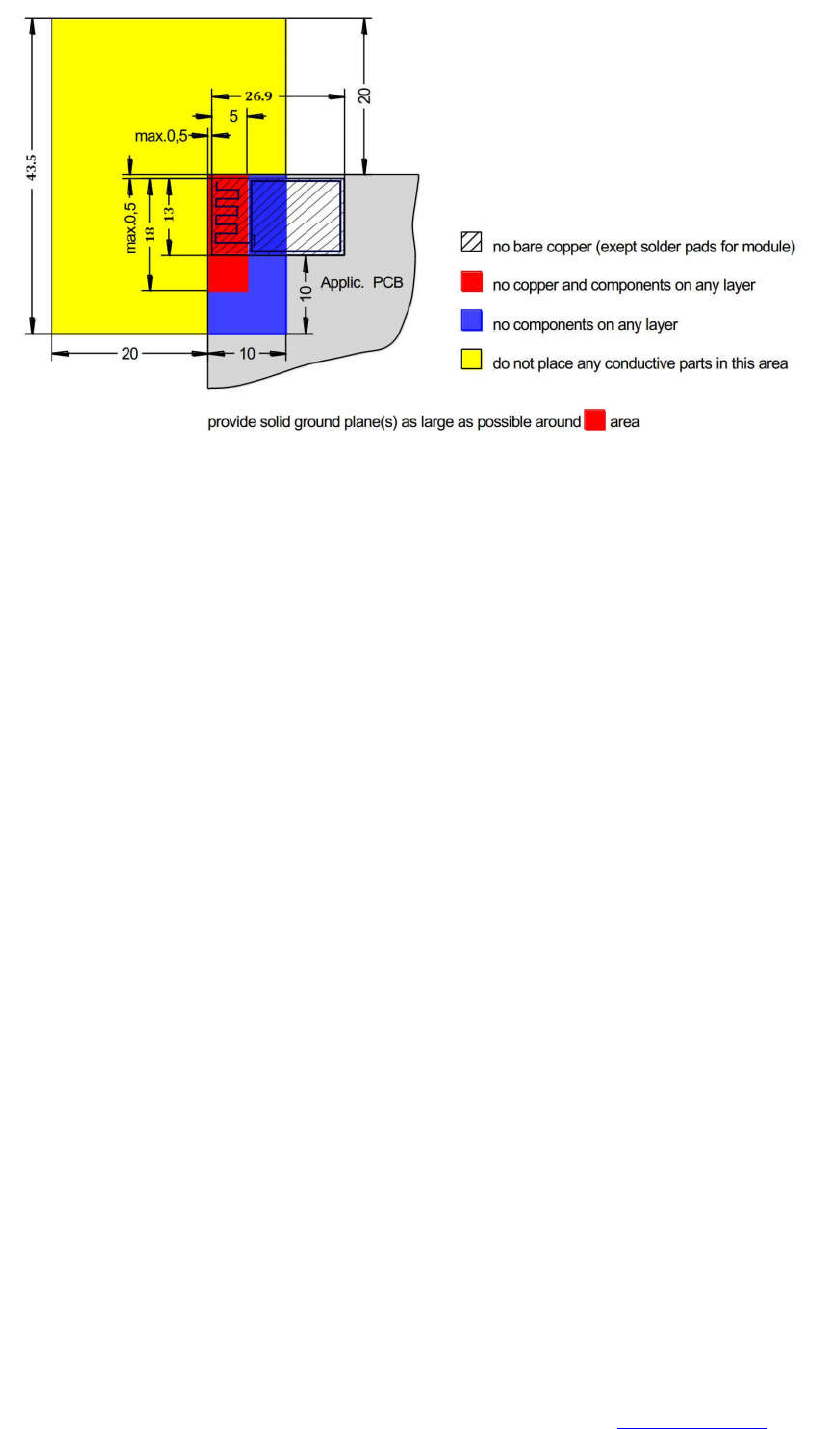
Shenzhen Feasycom Technology Co.,LTD www.feasycom.com
17
Figure 14: FSC-BT826 Restricted Area
Following recommendations helps to avoid EMC problems arising in the design. Note that each
design is unique and the following list do not consider all basic design rules such as avoiding capacitive
coupling between signal lines. Following list is aimed to avoid EMC problems caused by RF part of the
module. Use good consideration to avoid problems arising from digital signals in the design.
Ensure that signal lines have return paths as short as possible. For example if a signal goes to an
inner layer through a via, always use ground vias around it. Locate them tightly and symmetrically
around the signal vias. Routing of any sensitive signals should be done in the inner layers of the PCB.
Sensitive traces should have a ground area above and under the line. If this is not possible, make sure
that the return path is short by other means (for example using a ground line next to the signal line).
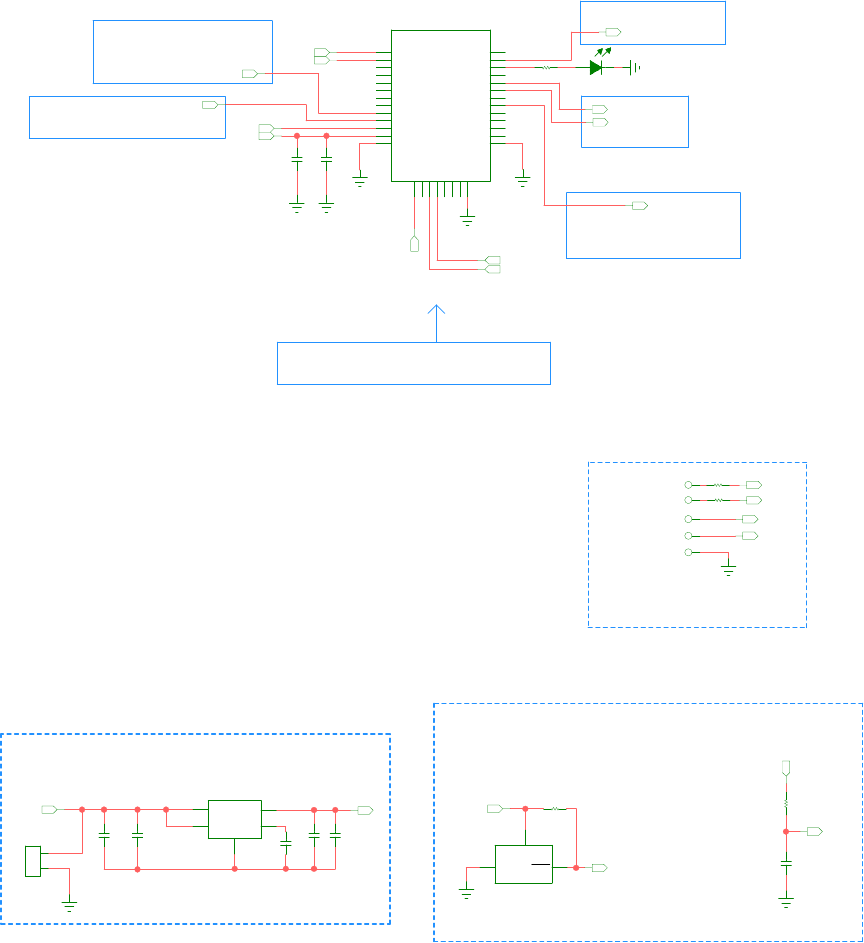
18
9. Application Schematic
Features: a dormant state,
low level module is in operation mode,
Default Mode: High Level
When send a 80ms low level pulse,
can work under recyclable switch mode,
Default Mode: High Level
One low pulse with 80ms duration low signal
to trigger bluetooth disconnection.
commission & transparent transmission mode. BT work Status Indicator Light
I2C Interface
I2C_CLK
I2C_DATA
BT Connection Status Indicator Light
(Remarks)
The module reserved the power pin, ground ,reset ,SWCLK,SWDIO for test.
High level said module is in sleep mode.
1
2
3
4
5
6
7
8
9
10
11
12
13
14
15
16
17
18
19
20
21
22
23
24
25
26
27
28
29
30
31
32
33
34
MCU_RX
MCU_TX
RESET
SWDIO
SWCLK
3V3_BT
PA2
PIO7
PIO6
DISCONNECT
TRANSFSER_MODE
BOOT0
PIO4
LED
R13
560R
C54
100nF
C4
10uF
UART_TX
UART_RX
UART_CTS
UART_RTS
PCM_CLK
PCM_OUT
PCM_IN
PCM_SYNC
TRAN/AIO0
DISC/AIO1
RESET
VDD_3V3
GND
BOOT0
NC
SWCLK
SWDIO
NC
NC
NC
GND
GND
PIO0
PIO1
PIO2
PIO3
PIO4
PIO5
PIO6
PIO7
PIO8
PIO9
PIO10
PIO11
U2
FSC-BT826
DEBUG Interface
(Optional)
3V3_BT
RESET
SWDIO
SWCLK
R3
22R
R10
22R
TP7
TP8
TP9
TP10
TP11
POWER
RESET (Optional)
Reset Circuit Based On Voltage Dual Comparators
RC Reset Circuit
(Optional)
1
2
34
5
1
21 2
3
3V3_BT
5V
3V3_BT
RESET
3V3_BT
RESET
C3
10uF
C1
10nF
C5
10nF
C6
10uF
VIN
GND
EN BP
VOUT
U3
C2
10nF
C14
100nF
R2
10K
J2
R4 100K
GND RESET
VCC
U1
CN809R-2.63V